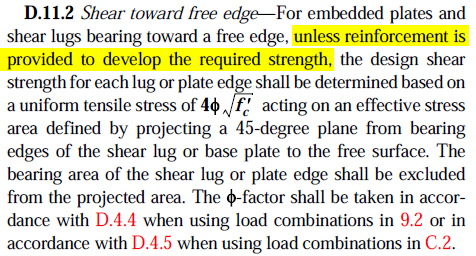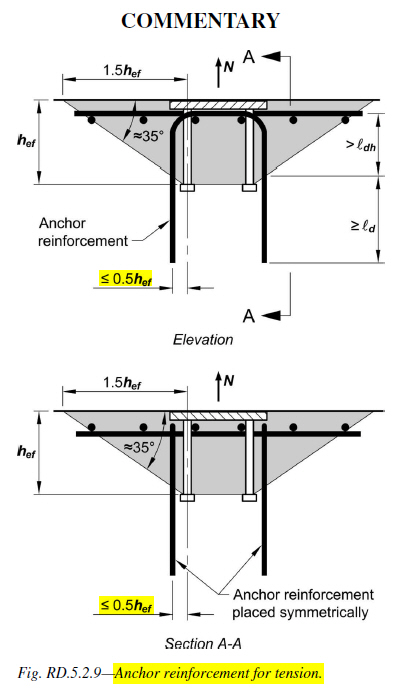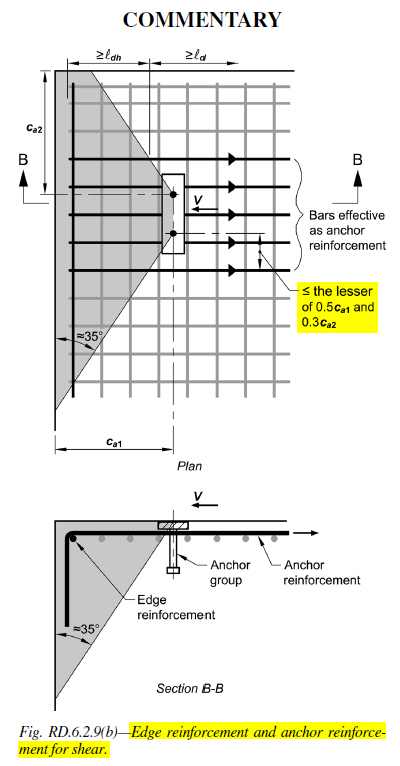Not Using Anchor Reinforcement
Select design using or not using anchor reinforcement for
resisting shear toward free edge or concrete breakout as
stated in ACI 349-06 clause D.11.2
ACI 349-06 clause D.11.2

Using Anchor Reinforcement - anchor reinforcement strength is
used to replace concrete shear toward free edge or shear
breakout strength stated in ACI 349-06 clause D.11.2.
The anchor reinforcement requirements will follow ACI 318-11
Appendix D clause D.5.2.9 and D.6.2.9.
Not Using Anchor Reinforcement - concretet strength is used to
resist concrete shear toward free edge or shear breakout as per
ACI 349-06 clause D.11.2
When Using Anchor Reinforcement option is chosen, it normally
significantly increases the shear key shear capacity, but the code
has some specific requirements for rebar arrangement so that
it can be considered being effective for resisting the shear force.
Sample Shear Key Pocket Reinforcement Details

To take advantage of obtaining higher shear key capacity by
using anchor reinforcement, the trade off is that the engineer has
to design and arrange the rebar around shear key following
details in ACI 318-11 RD.5.2.9 and RD.6.2.9.
In the cases such as shear key locating on a concrete pedestal
where the 4-side edge distances are very limited, or the shear
key locating on a high seismic design zone, it would be very
difficult to get the shear key design passed without using anchor
reinforcement. In these cases, uisng anchor reinforcement option
normally would be the only choice for shear key design.
ACI 318-11 RD.5.2.9
To be considered being effective for resisting anchor tension,
vertical reinforcing bars shall be located within 0.5hef from
the outmost anchor's centerline.

ACI 318-11 RD.6.2.9
To be considered being effective for resisting anchor shear, hor.
reinft shall be located within min( 0.5c1, 0.3c2 ) from the
outmost anchor's centerline
